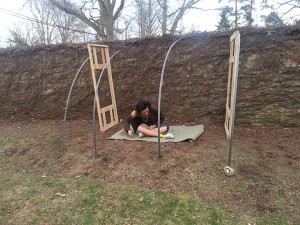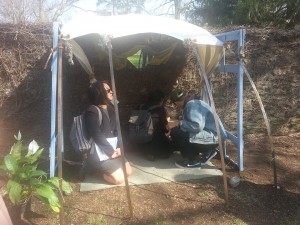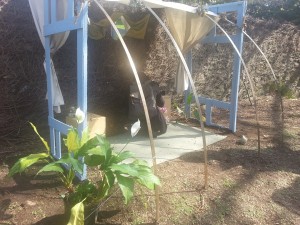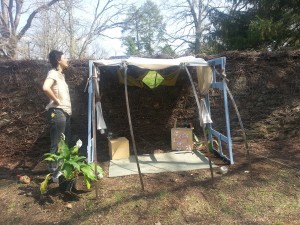Our goal as historians was to create a space which invited people to not only experience the new space it established and re-evaluate that which it was built within, but to share and contribute to it as well. It was through this give and take that we hoped to, in our own way, subvert its surrounding environment, which is primarily dominated by personal histories that are hinted at from the exterior but always guarded.
Our structure was simple, yet strong. Its thin steel bars and precarious wooden frames gave the piece a delicate quality, yet it survived rain, wind and lightning. It was physically open enough to be inviting to people passing by, while also providing a home-y intimacy. This is why the piece is relevant to psychogeography, as it disrupts what would normally be a space to pass by on the way to another destination, and allows people to experience the space from a different view. At the same time, through the system of leaving objects / drawings, it also invites people to glimpse the accumulative history of our created space, giving hints as to the individuals who have left their mark there. This affects one’s phenomenological understanding of a place, allowing you to be temporarily conscious of the invisible histories of individuals long gone from the area.







